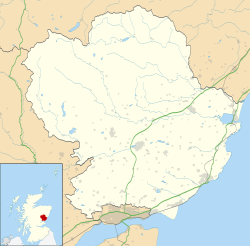Stracathro
| |
|---|---|
 Stracathro School | |
Location within Angus | |
| Council area | |
| Lieutenancy area | |
| Country | Scotland |
| Sovereign state | United Kingdom |
| Post town | BRECHIN |
| Postcode district | DD9 |
| Dialling code | 01356 |
| Police | Scotland |
| Fire | Scottish |
| Ambulance | Scottish |
| UK Parliament | |
| Scottish Parliament | |
Stracathro (Scottish Gaelic : Srath Catharach) is a small place in Angus, Scotland. It was the site of a Roman marching camp as their forces invaded to the north.

